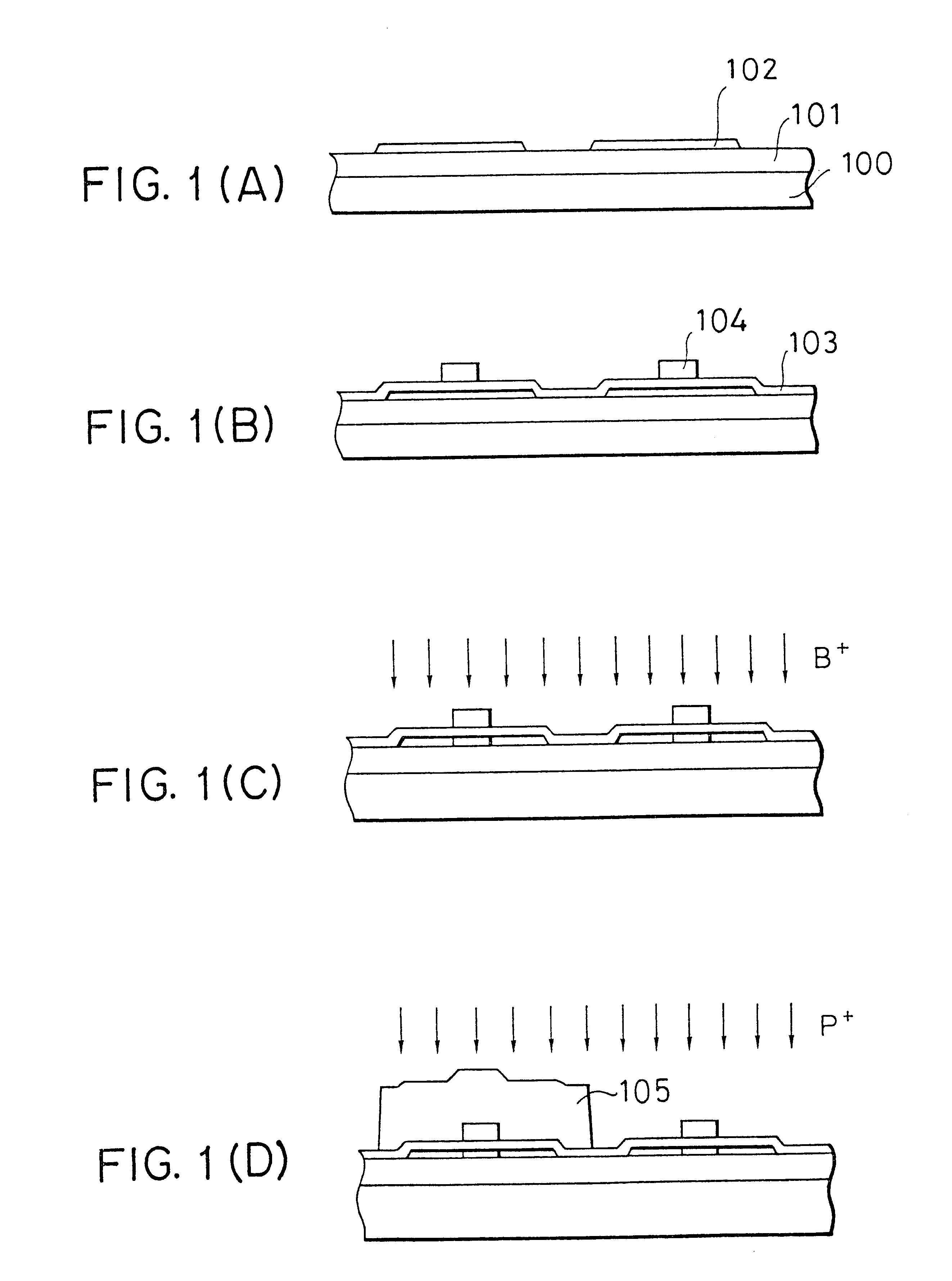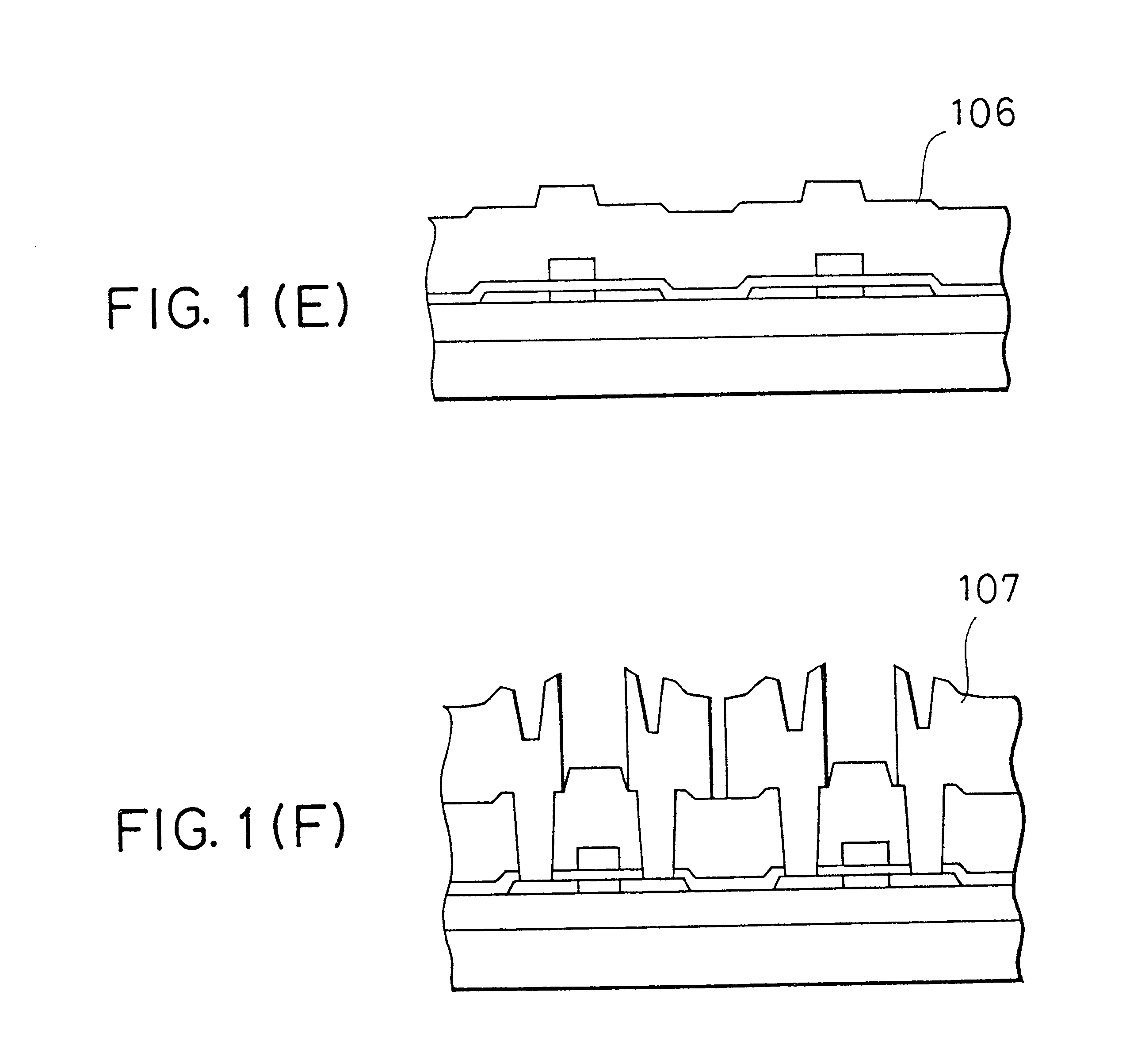Thin film transistor and semiconductor device and method for forming the same
a thin film transistor and semiconductor technology, applied in the direction of transistors, semiconductor devices, electrical appliances, etc., can solve the problems of high cost, insufficient polycrystal silicon thin film transistors to meet the scale-up and speed-up needs of devices, and inability to obtain stable and uniform characteristics
- Summary
- Abstract
- Description
- Claims
- Application Information
AI Technical Summary
Benefits of technology
Problems solved by technology
Method used
Image
Examples
Embodiment Construction
An example using a low alkali glass different from that of the embodiment 1 will be shown as a comparison example. First, a pre-anneal process was carried out at 600.degree. C. for 48 hours, and a solid-phase growth was carried out by the annealing treatment at 600.degree. C. for 48 hours. The subsequent processes were identical to those of the embodiment 1. In this process, the thermal contraction were measured to be 900 to 1000 ppm in the solid-phase growth process and 300 ppm in the activation process.
It was found from the measurement of the characteristics of the thin film transistor thus obtained that a threshold voltage is shifted to a positive gate voltage side by 3 to 4 volts for NMOS and by 2 to 3 volts for PMOS as shown in FIGS. 4(a) and (b). In addition, a phenomena that rise-up of a current value of the PMOS is sluggish was observed.
Further, in the processes, the mask alignment was very difficult because the thermal contraction of the substrate in the activation treatmen...
PUM
| Property | Measurement | Unit |
|---|---|---|
| threshold voltage | aaaaa | aaaaa |
| thickness | aaaaa | aaaaa |
| temperature | aaaaa | aaaaa |
Abstract
Description
Claims
Application Information
 Login to View More
Login to View More - R&D
- Intellectual Property
- Life Sciences
- Materials
- Tech Scout
- Unparalleled Data Quality
- Higher Quality Content
- 60% Fewer Hallucinations
Browse by: Latest US Patents, China's latest patents, Technical Efficacy Thesaurus, Application Domain, Technology Topic, Popular Technical Reports.
© 2025 PatSnap. All rights reserved.Legal|Privacy policy|Modern Slavery Act Transparency Statement|Sitemap|About US| Contact US: help@patsnap.com



